|
|
|
|
News Digest - Week of Sept. 23, 2024
Michigan Trails Week is right around the corner! Find your new path.
|
|
Here are a few of this week's stories from the Michigan Department of Natural Resources:
See other news releases, Showcasing the DNR stories, photos and other resources at Michigan.gov/DNRPressRoom.
PHOTO FOLDER: Larger, higher-res versions of some of the images used below, and others, are available in this folder. Note: The pine marten photo used in this email is courtesy of U.S. Fish and Wildlife Service National Digital Library.
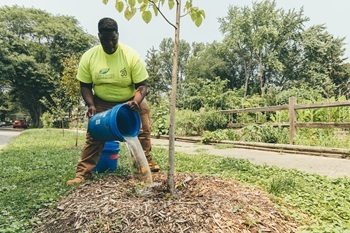
If you planted trees this spring or summer, it may be time to provide them with a drink of water.
Even though we’re thinking about cooler weather ahead, your newer trees are still growing and may be thirsty during much of the state's recent warm and dry conditions. Here are a few tips for watering:
- Check soil moisture first. If you can poke a long-handled screwdriver into the soil about 10 inches down and the end comes out dry, it’s time to water.
- Water slowly and deeply. You can fill a tree-watering bag, use a hose on a slow trickle, turn on a sprinkler or use one or two 5-gallon buckets of water to deliver water to the root area under the tree canopy.
- The goal is to provide the equivalent of about 1 inch of normal rainfall per week.
- Provide a layer of organic mulch about 3 to 4 inches deep over the root area to help maintain soil moisture. Keep the mulch away from the trunk of the tree. An easy-to-remember guide for mulch: doughnuts are good, volcanoes are bad! “Volcanoes” – when mulch is mounded high and touches the tree bark – can do more harm than good.
Check out the MSU Extension do's and don'ts of irrigating landscape plants and watch for more tips later this fall on preparing your landscape trees for winter and a great start next spring.
Questions? Contact DNR urban forester Lawrence Sobson at 313-316-4137.
|
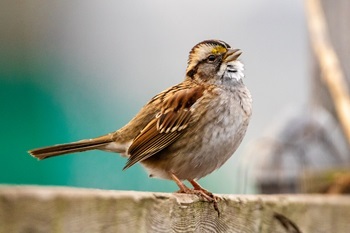
If your weekend plans put you in southeast Michigan, swing by the Haven Hill Festival Saturday, Sept. 28, from 10 a.m. to 3 p.m. at Highland Recreation Area in Oakland County. It’s a great opportunity to celebrate fall migration with MI Birds and the Oakland Bird Alliance at the park’s Goose Meadows Picnic Area – an important stopover site for migratory birds like the Swainson’s thrush and white-throated sparrow (shown above).
The Oakland Bird Alliance and the Friends of Highland Recreation Area will give a one-hour presentation on MI Birds, a public outreach and education program created by Audubon Great Lakes and the DNR. It will highlight birding at Highland Recreation Area and the importance of this area for migratory birds. Catch this 1 p.m. presentation at the shelter in the picnic area.
Stop by the Oakland Bird Alliance exhibition table in the picnic area to learn how MI Birds is helping local birds, and how you can get involved.
The Haven Hill Festival, hosted by the Friends of Highland Recreation Area, is a celebration of the Haven Hill Estate – once the country estate of Edsel and Eleanor Ford – and the natural beauty and historic wonders of this recreation area in the townships of Highland and White Lake. This fun, free* and family-friendly event includes a variety of vintage-themed activities, music and opportunities to explore local birds. See event details.
*Please note that a Recreation Passport is required for vehicle entry into Highland Recreation Area. If you do not have one, you will be able to purchase one at the park with cash, check or credit card.
|
Fall migration birding statewide
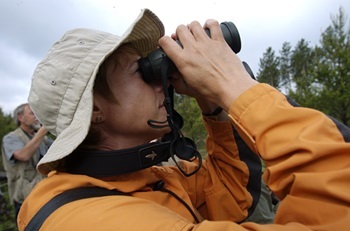
Birders outside the metro Detroit area can make the most of fall bird movement across Michigan, too, with some quick MI Birds tips and resources to aid in planning your next trip!
Learn which birds to expect in different regions, as waves of new fall migrants pass through the state each month on their journey south. This month, waterfowl and raptor migrations peak, so expect to see birds like broad-winged hawks and American wigeon in good numbers.
Not sure where to go birding? Explore one of Michigan's birding trails and remember to follow these safety tips to confidently view birds and other wildlife at or near hunting areas.
MI Birds aims to deepen all Michiganders’ engagement in the understanding, care and stewardship of public lands that are important for birds and local communities.
Questions? Contact Erin Ford at 313-820-0809.
|
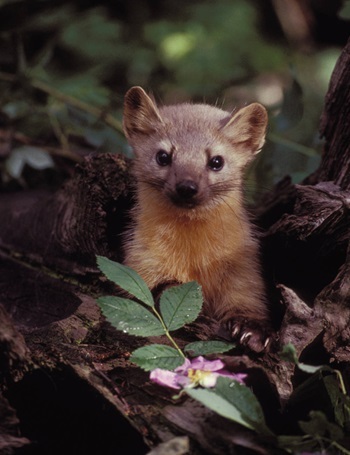
Bald eagle. American (or pine) marten. Kirtland’s warbler. What do these three Michigan species have in common? How about a remarkable comeback after being on the brink of disappearing from our state?
Together this trio represents the success of a law that has supported the protection and restoration of our most vulnerable species.
This year marks a major milestone in Michigan’s conservation history: the 50th anniversary of the Michigan Endangered Species Act being signed into law. Enacted in September 1974, this pivotal legislation included protections for endangered species and established the creation of Michigan’s threatened and endangered species list, a tool for identifying and protecting our state's rare plants and animals. Michigan’s Endangered Species Act was later recodified as Part 365, Endangered Species Protection, of the Natural Resources and Environmental Protection Act (NREPA, Act 451 of 1994), as it is more familiarly known today.
“This law serves as a conservation spotlight, focusing our attention and efforts on species at risk of disappearing from Michigan,” said Jennifer Kleitch, endangered species specialist with the DNR Wildlife Division.
Dedicated research and management paired with incredible partnerships have paved the way for rare species to recover.
“Thanks to the unwavering dedication of conservation organizations, researchers, local communities and countless individuals, Michigan has committed to banding together to keep native wildlife and plants around for future generations,” said Kleitch.
The statute remains as vital today as it was 50 years ago, supporting conservation for more than 400 species, including nine mammals, 12 amphibians and reptiles, 22 fish, 25 birds, 30 insects, 35 mollusks and 274 plants.
|
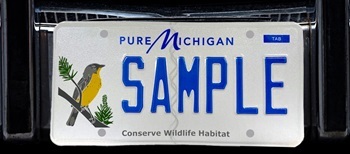
If you would like to support rare species conservation, consider donating to the Nongame Fish and Wildlife Fund or purchasing a Kirtland’s warbler license plate. All proceeds from this fund support efforts related to the research and management of nongame wildlife, fish and plant species.
During this anniversary, we’re also celebrating our supporters. Anyone who donates to the Nongame Fish and Wildlife Fund and provides their name will have it read aloud on one of the monthly DNR Wildtalk podcast episodes. Join the growing list of donors who have already contributed over $500 since Sept. 1!
Here’s to another 50 years of successful conservation and continued protection of Michigan’s natural heritage. Questions? Contact Jennifer Kleitch at 989-370-2158.
|
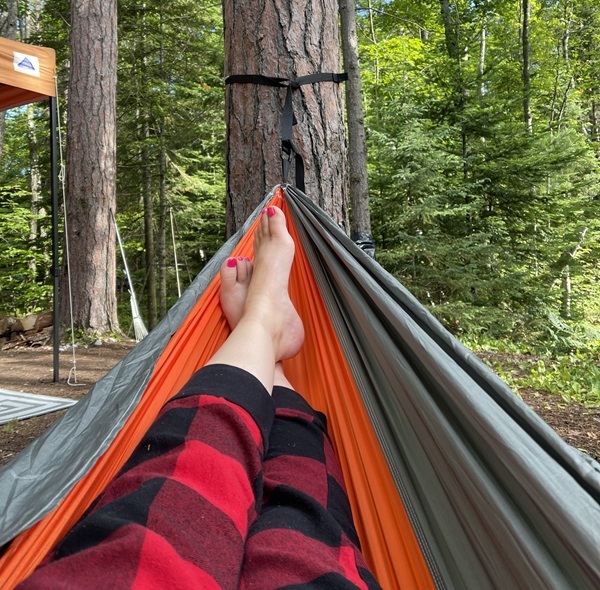 See more pictures by Michigan state parks photo ambassadors at Instagram.com/MiStateParks. For more on the program, call Stephanie Yancer at 989-274-6182. (This photo is by Samantha Bohon, for the Michigan DNR, at Two Hearted River State Forest Campground in Luce County.)
|
|
If fishing and hunting are on your fall bucket list, be sure to get the Michigan DNR Hunt Fish app. It's your mobile path to buy and store licenses, permits, report harvests and more, right at your fingertips!
|
|
|
|
|
|
|